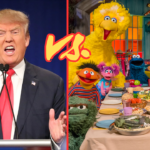Nintendo finally dropped the details on the Switch 2, and on paper, it looks like a solid upgrade. We’re getting a larger OLED screen, 4K upscaling when docked, better Joy-Cons that (hopefully) don’t drift after a week, and two USB-C ports for more flexibility. All of that sounds great. It’s the kind of hardware bump people have been waiting for since the original Switch started to feel a little underpowered in the modern landscape. But beyond the shiny features, there’s a pile of issues that are harder to ignore — and they have big implications not just for Nintendo fans, but for the whole gaming industry.
Let’s start with the big one: backward compatibility. The Switch 2 sort of supports older Switch games, but not in the way people were hoping. Some titles will run, others might require patches, and a few might not work at all unless they’re repurchased in some “updated” form. That’s a huge letdown, especially for anyone with a deep library of physical games. This isn’t just a technical annoyance — it’s a signal. Nintendo is once again doing the bare minimum when it comes to preserving value for their long-time customers. After seven years with the Switch, people expected a smoother transition.
Then there’s the price. The console is launching at $449 USD, which is a steep jump from the original Switch. But worse than that? First-party physical and digital games are being priced at $79.99 and $69.99 respectively. That’s a massive hike, especially when you consider that Nintendo games rarely go on sale and never really drop in price. Combine that with limited storage and a subscription service that’s still inconsistent, and suddenly the Switch 2 starts feeling less like an upgrade and more like a luxury item.
This kind of pricing structure could set a dangerous precedent. Nintendo’s one of the biggest players in the industry — when they move, people watch. If they normalize $70-$80 games across the board, there’s a good chance Sony, Microsoft, and even PC publishers could follow. It’s already happening to an extent with AAA titles on PS5 and Xbox Series X, but Nintendo pushing it with both physical and digital copies could lock it in as the new standard. And if that happens, it’s bad news for everyone.
Here’s the thing: console gaming used to be the “affordable” way to play. You bought the hardware once, you picked up physical games, maybe traded them in or bought used. Now, with the Switch 2, you’re paying more upfront for the console, more for each game, and you’re getting fewer options to recoup any of that cost down the line. If this trend continues, Nintendo could end up pricing out the exact audience that made the original Switch such a massive hit — families, casual players, and budget-conscious gamers.
And that leads to a bigger question: are we reaching the point where PC becomes the smarter long-term investment?
Right now, building or buying a gaming PC might seem expensive, but once you’re in, you’re not locked into anyone’s walled garden. Games go on sale constantly. Modding is open. Backward compatibility is basically a given. Even handheld options like the Steam Deck are starting to eat into the territory Nintendo once owned. The Switch 2 is still going to appeal to a huge number of people, but if pricing keeps trending this way, more gamers — especially younger ones — might decide that PC gives them more freedom and value.
This also has ripple effects for indie devs. One of the best parts about the original Switch was how welcoming it was to indie titles. It became a haven for smaller studios that couldn’t get shelf space elsewhere. But now, with inflated digital pricing and a storefront that still doesn’t prioritize discoverability, indie games could get buried under the weight of overpriced AAA remakes and sequels. If Nintendo doubles down on pushing premium pricing for all games, indie studios might start pulling back, or worse — pricing themselves out just to stay visible.
Meanwhile, the big AAA publishers will be fine. They’ll sell their $80 deluxe editions and collect their microtransactions on top of it. But that’s not where innovation lives. That’s not where the weird, bold, creative stuff comes from. And if the Switch 2 ecosystem becomes hostile to smaller developers, it’s a loss for everyone who actually likes variety in their games.
To be clear, the Switch 2 isn’t doomed. It’s got power, portability, and the potential for some genuinely amazing games. But Nintendo’s decisions here are more than just business choices — they reflect a shift in how gaming is being monetized, and who it’s being designed for. If we’re not careful, gaming becomes less about access and creativity and more about how much you’re willing to spend.
And honestly? That’s not a future worth cheering for, no matter how nice the new screen looks.





